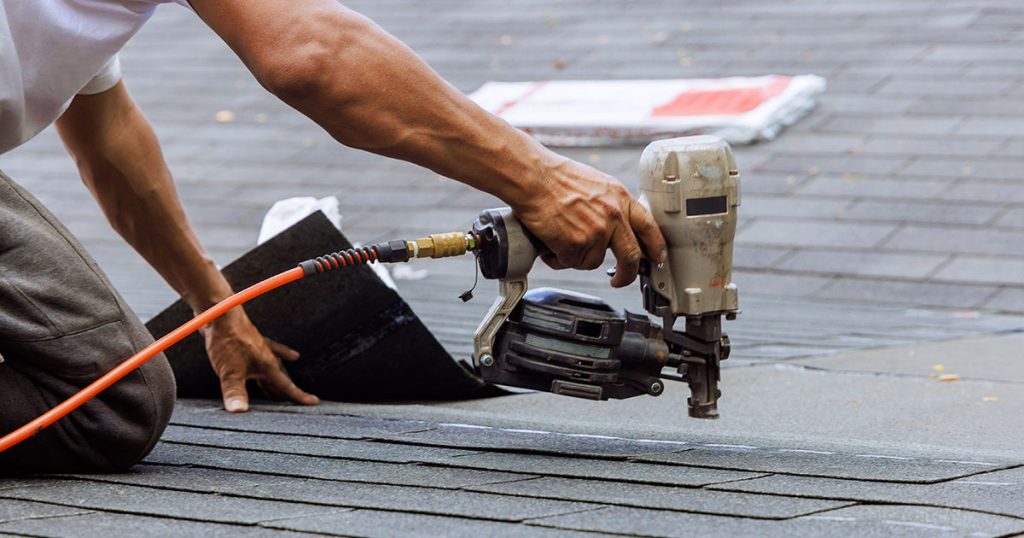Imagine standing in your driveway, looking up at your roof, and realizing it’s time for a major decision. You know roof replacement isn’t cheap—but how much should you actually expect to pay? And more importantly, how do you make sure every dollar counts?
At Single Ply Roofing Experts, we’ve spent decades working with property owners across the U.S., helping them understand what really drives roof replacement cost. This guide breaks it down clearly, blending professional expertise with practical, easy-to-digest advice so you can make a confident decision.
What is Roof Replacement Cost?
Put simply, roof replacement cost is the total expense required to remove your old roofing system and install a new one. But it’s more than just shingles or single-ply membranes—it includes materials, labor, disposal, permits, and any additional upgrades.
Key components include:
- Materials: TPO, PVC, EPDM, shingles, or metal. Each comes with a unique price range. (Curious? Here’s a breakdown: A Breakdown of Different Single Ply Roofing Types)
- Labor: Professional installation varies based on expertise and local market conditions.
- Roof Size & Slope: A larger or steeper roof requires more time, materials, and safety measures.
- Additional Elements: Flashing, insulation, underlayment, ventilation systems, and even permits play a role. (Learn more here: What is Roof Flashing?)
Why Roof Replacement Cost Matters
Your roof is more than a cover—it’s the first line of defense against weather, energy loss, and structural damage. Understanding roof replacement cost isn’t about finding the cheapest option—it’s about long-term value.
- Safety: A compromised roof risks leaks, mold, and even structural collapse.
- Property Value: According to the National Association of Realtors, roof replacement ranks among the top home improvements for resale value.
- Savings Over Time: High-quality TPO or PVC roofing can reduce energy costs and require fewer repairs. (See our resource: Enhancing Property Value With a High-Quality TPO Roof System)

By investing strategically, you avoid costly surprises and secure peace of mind.
Factors That Influence Roof Replacement Cost
Every roof is different. Here are the main factors that can raise—or lower—your costs:
1. Roofing Material
- TPO Roofing: Affordable, energy-efficient, ideal for commercial buildings.
- PVC Roofing: Higher upfront cost but excellent longevity and chemical resistance.
- Shingles: Budget-friendly, common for residential roofs.
Metal Roofing: Durable and stylish, but higher cost.
2. Labor & Regional Pricing
Labor can account for up to 60% of the total bill. Expect higher costs in metropolitan areas compared to rural regions.
3. Roof Size & Slope
A steep-sloped, large roof requires more safety equipment, labor hours, and material coverage.
4. Additional Components
- Flashing: around chimneys and skylights
- Ventilation: to prevent condensation
- Insulation: for energy savings
- Disposal & Permits: often overlooked hidden costs
Common Mistakes to Avoid with Roof Replacement Cost
Many property owners end up spending more than expected. Here’s what we’ve seen over decades in the field:
- Ignoring Inspections: Skipping a professional inspection leads to missed structural issues.
- Underestimating Hidden Costs: Flashing, disposal, or permits can surprise you.
- Choosing the Cheapest Contractor: Low bids often mean cutting corners or using subpar materials.
- Delaying Action: Waiting too long can turn a simple repair into a full replacement.

Expert Tip: Always get at least 2–3 detailed estimates. Transparency is key when it comes to roof replacement cost.
Expert Tips from Single Ply Roofing Specialists
Here’s insider knowledge you won’t find in most general guides:
- Repair vs Replace: If your TPO roof is under 10 years old, repair may suffice. Beyond 15 years, replacement often saves more in the long run.
- Energy Efficiency: TPO and PVC reflect UV rays, reducing cooling costs by up to 30%.
- Longevity by Type:
- TPO: 20–30 years
- PVC: 25–35 years
- Shingles: 15–20 years
- Metal: 40–70 years
- Smart Upgrades: Adding insulation during replacement pays off in both comfort and reduced utility bills.
FAQs About Roof Replacement Cost
How much does the average roof replacement cost in the U.S.?
On average, homeowners spend $8,000–$15,000, while commercial roofs can range from $5–$12 per square foot. Factors like material choice and roof size affect the total.
Is a roof leak considered an emergency?
Yes. Even small leaks can escalate quickly, causing water damage, mold, and electrical risks.
Should I repair or replace my roof if I see minor damage?
If the roof is relatively new, repairs may be cost-effective. Older roofs with widespread issues are usually better candidates for replacement.
What is the most cost-effective roofing material?
TPO roofing offers an excellent balance of cost, energy efficiency, and durability, making it ideal for many commercial properties.
Does replacing a roof increase property value?
Yes. A new roof can recover up to 60–70% of its cost at resale.
Final Thoughts on Roof Replacement Cost
Understanding roof replacement cost is about more than dollars—it’s about making a strategic investment in your property’s future. From choosing the right material to avoiding hidden pitfalls, every decision matters.

At Single Ply Roofing Experts, we bring decades of specialized knowledge to every project, ensuring you get the best balance of quality, longevity, and value.
Ready to get started? Contact us today for a detailed inspection and personalized estimate—or explore our expert resources on Why Single-Ply Roofing Is the Best Choice for Your Commercial Building!

